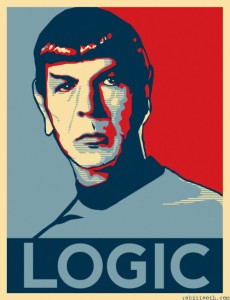What is your definition of a good creative brief? If you work in advertising, marketing, PR or social media, and a variety of other fields, chances are you have a working answer.
Here’s a great answer from a book called What’s a Good Brief? The Leo Burnett Way, written in 1998:
“A good creative brief…
…is brief and single minded
…is logical and rooted in a compelling truth
…incorporates a powerful human insight
…is compatible with the overall brand strategy
…is the result of hard work and team work”
Okay, so that’s what makes a good creative brief. But what is your definition of the document itself? Forget the descriptors. What is this thing?
If you don’t have a definition, how do you know if your brief is good or great or inspired? If you don’t know what each of those five points above is, how do you know if you even have a creative brief?
Let’s take a break this week and define the document itself so we know when a great one lands in front of us.
The simplest definition I have is this:
A creative brief is an objectives document whose sole purpose is to spark relevant ideas for the creative team.
I like it. But does it explain all the points in the Leo Burnett definition, which, by the way, is pretty darn close to being definitive? No.
Remove the word “good” and focus on just “creative brief.” If you look closely at the Leo Burnett criteria, you have a solid working definition:
1. A creative brief is brief and single minded
The document reduces to its most essential elements the purpose of the job being assigned to the creative team. Therefore it must, by definition, be focused. It must get to the point. 
This idea often flies in the face of a product manager’s expectations. She sees her product as a “unique package of features” (a term I heard spoken out loud by a marketing manager some years ago).
No one buys a “unique package of features.” They buy a solution to a problem, real or perceived. A favorite shampoo makes your hair look just so. You feel sexy. Your car makes you feel successful or masculine or trendy.
The creative brief makes tangible what this “feeling” is and communicates it succinctly to the creative team.
2. A creative brief is logical and rooted in a compelling truth
A creative brief must connect the dots for the creative team, starting with the reason why a product is desirable. The brief must show the logic behind the product-as-solution, not just the emotion. In other words, a creative brief must tell a single-minded truth.
For example, the single-minded proposition on one creative brief for the soft drink Tango reads: “Join the Tango resistance.”
 The “logic” is the reason to believe the proposition. What facts can you present to the creative team to help them build their creative case? With Tango: “It is no ordinary soft drink; it therefore says something about you when you drink it. It’s controversial, daring and overt,” according to the brief.
The “logic” is the reason to believe the proposition. What facts can you present to the creative team to help them build their creative case? With Tango: “It is no ordinary soft drink; it therefore says something about you when you drink it. It’s controversial, daring and overt,” according to the brief.
3. A creative brief incorporates a powerful human insight
Staying with the soft drink Tango, the brief writer had access to an insight about who would drink this product: teenagers.
Teens, according to the agency creative brief, “take on a brand’s personality as a representation of their own. Therefore, if a brand has no personality, it’s impossible for (teens) to feel an affiliation toward it.”
The brief also makes clear that Tango’s history of being out of the ordinary had not been leveraged. The conclusion? “In order to gain a loyal consumer base, we need to give (teens) something that’s worth being involved with.” 
Although this product and its television campaign are dated, the brief stands as a towering example of being “inspired.” Go to YouTube and view the spot that arose from this brief. You’ll see a “compelling truth” in 60 seconds.
4. A creative brief is compatible with the overall brand strategy
A simple reminder: If you don’t have a strategy, you cannot write a creative brief. Strategy first, creative brief second.
5. A creative brief is the result of hard work and team work
Even in the late 1990s, Leo Burnett recognized the value of teamwork in writing a creative brief. No one writes ads by themselves. It is a process that involves a team: copywriter and art director.
No one should write a creative brief alone. At least two people should collaborate. I recommend an account planner or account management person plus a senior creative.  But even junior account people and junior creatives, pairing up, are better than a soloist.
But even junior account people and junior creatives, pairing up, are better than a soloist.
These five criteria, for me, are the definition of both a good creative brief and, simply, the creative brief itself. A creative brief is not a creative brief if it does not accomplish these five objectives.
This was a review of basics. As if you were practicing lay-ups on the basketball court or doing barre-work in a beginning ballet class.
Professionals always return to fundamentals to polish their skills.

